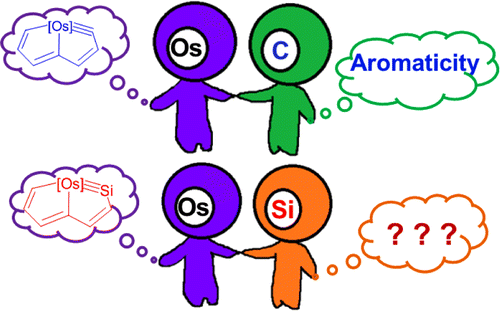Theoretical Study on the Stability and Aromaticity of Metallasilapentalynes

Antiaromatic compounds and small cyclic alkynes or carbynes are both challenging for synthetic chemists because of the destabilization caused by their antiaromaticity and highly distorted triple bonds, respectively. These dual destabilizations could be the reason why pentalyne (I), a highly antiaromatic and extremely strained cyclic alkyne, has never been synthesized. Recently, we have successfully synthesized the first metallapentalyne (II), benefiting from the stabilization of a metal fragment by reducing the ring strain and switching the antiaromaticity in pentalyne to the aromaticity in metallapentalyne. An interesting question is raised: can the aromaticity in metallasilapentalyne (III) be retained, considering the fact that the silicon atom is reluctant to participate in π bonding? Here we report a thorough theoretical study on the stability and aromaticity of metallasilapentalynes. The computed energies and magnetic properties reveal the reduced aromatic character of osmasilapentalyne in comparison with osmapentalyne. The effect of the ligands, substituents, and base on the aromaticity and stability of osmasilapentalyne is also discussed, thus providing an important guide to the synthesis of osmasilapentalyne.
